Reconsidering the MCAD/Jerome Fellowship Exhibition
Diane Mullin, associate curator at the Weisman and former MCAD/Jerome Fellowship director, makes the case for rethinking how fellows' work is presented, calling into question the continued relevance of the traditional model of annual exhibitions.
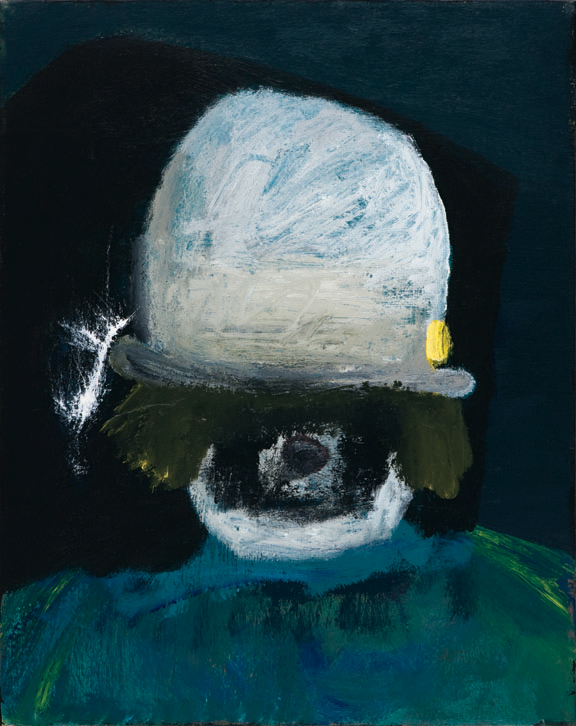
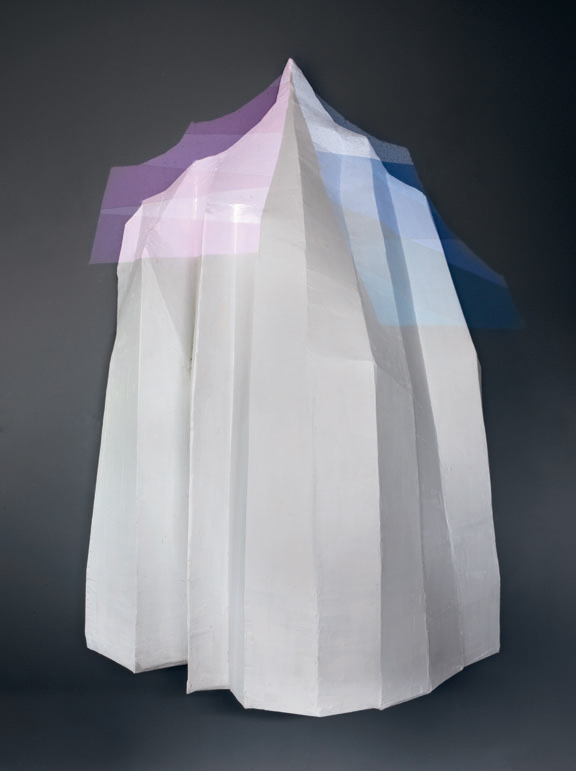
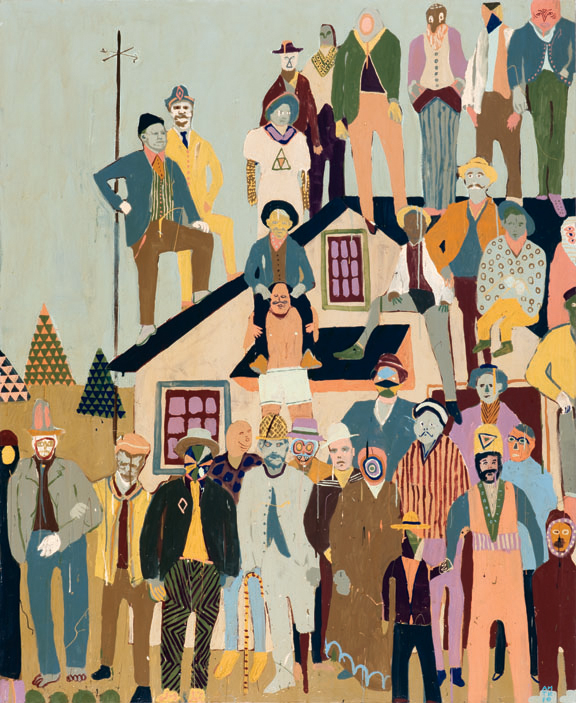
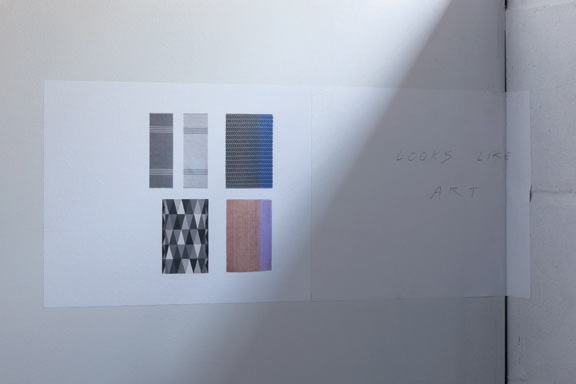
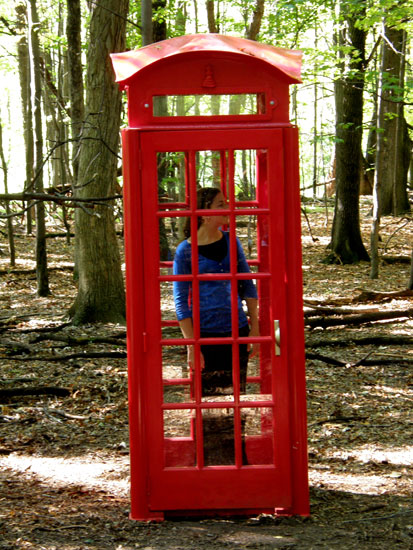
WHAT DO PIXILATED IMAGES OF BUILDINGS and photographic stagings of amateur pornography (whatever that is) have to do with one another? And where do phone booths and chalkboard-hovering sports analysts fit in? Why would you hang a low budget, street-style video of running children with large-scale wall reliefs referencing arctic glaciers? Or, how are solitary, expressionist paintings related to the cool, collaborative social content-laden paintings installed so close by?
Questions like these are typical of the sorts of responses you hear to the annual MCAD/Jerome emerging artists’ fellowship exhibition each year. While this well-known, well-heeled, and often well-skewered show may be among the most notable which regularly prompt this kind of reaction, I suspect it’s a good example of what is frequently said about any fellowship show. While they’re perennially posed, to my mind such questions miss the point of the programs being showcased in these exhibitions. In the end, as I hope to illuminate here, the persistent consternation such fellowship shows provoke may be the fault, not of the artists, jurors, or program directors, but of the mode of and perhaps even the inclusion of the exhibition itself.
I’ll come clean: I was once the director of the MCAD/Jerome fellowship program. In interest of full disclosure, I have also served as a catalog essayist (before my tenure as director) and as a juror (after my tenure as director) for the program. I say this because it is relevant — I have first-hand experience with the ins and outs of these emerging artists’ fellowships and a studied knowledge of the program’s long and important role in the landscape of the Twin Cities art scene. Because of that, I know that the annual MCAD/Jerome show is not simply an exhibition, but rather just one (highly visible) part of a multifaceted, year-long professional development program that includes a jury of curators and artists drawn here from across the country, studio visits with three critics of national renown (the real prize), access to Minneapolis College of Art and Design’s plentiful equipment, conversations with a critic who publishes an essay on each artist and their work, and, finally, a beautiful and meaty catalog — a permanent, professional archive of the fellows’ works that emerging artists such as the so-called MCAD/Jerome artists cannot value highly enough.
Christina Schmid, the 2007-08 critic and catalog essayist did a good turn during her stint with the Jerome fellows by elucidating the wider picture of the program — beyond the exhibition. Explaining the uniqueness of her assignment, she owns:
As a critic, I usually engage with work that is finished and on display in a gallery or a museum. But writing about these five emerging bodies of work presented me with a new challenge: as I sat down to compose these essays, the artwork was still very much in process.
While this explanation of her unique critical circumstances provides some view into the larger phenomenon that is the MCAD/Jerome Fellowship program, it is ultimately, primarily a disclaimer for the constrained scope of the writer’s project — not a new framing of the problem of how to “present” this program and its “product” to a larger public. This is not to say the writer has fallen short here; a reframing of such issues was, after all, not her charge. With this example in mind, however, it’s worth considering that such transparent and thoughtful reflection on the problems of presentation, both of the fellowship and its resulting work, could go a long way toward enhancing the program as a whole.
Actually, one very smart catalog designer who worked on the project while I was director attempted to reveal the program vs. exhibition-only tension of the enterprise within his book design. A former MCAD student, Namdev Hardisty (then known as Sparky), was well aware of the often-heard comment at Jerome fellows’ exhibitions, “Is that what they did for all that money?” So, he suggested we include a self-produced timeline of the fellowship year, submitted by each fellow. The resulting timelines revealed much about each artist, in particular, as well as about the program, in general — not only in its content (i.e. the articulation of what followed the award during each artists’ fellowship year) but also in its tone. Among the fellows’ reports on their time, especially charming was the representation of the wedding engagement of two of the program’s fellows — an event which each noted slightly differently in their respective timelines.
At the time I left my post at MCAD Gallery, Hardisty had proposed to further enhance this human element in the catalog’s design by working throughout the year to document chance encounters among the Jerome fellows, which he argued could also be incorporated somehow into the book project. Expanding such efforts to reveal the annual exhibition as only one part of a very productive and experimental year could go a long way toward staving off the common, but facile and undeserving critiques that attend each fellowship show’s opening.
As with many of the MCAD/Jerome catalog essays — probably even my own – last year, Christina Schmid attempted to draw conceptual connections between the artists, as if the fellowship show were a curated exhibition. Looking single-mindedly for such connective tissue amongst the fellows’ work, however, seems to me in retrospect to be too limiting. Instead, using an interpretive and analytic model for connecting these artists to others like them, outside the confines of the Twin Cities and even the larger region of the upper Midwest, seems to me a much more appropriate framework for critical evaluation of the fellows’ works. Admittedly, Schmid and many others do just this, in some part, in their individually focused essays on each artist, but one wonders if this paradigm for examining the fellows’ works might be drawn yet more clearly. What if the exhibition portion of the fellowship could be redesigned in such way that both the perception and perhaps more importantly the production of the work could be better, more fairly appreciated?
________________________________________________________
Why are the fellows exhibited together in the same space at the same time? Why are they even exhibited at all? Is this traditional mode of presentation of the fruits of a fellow’s work a convention that needs to be rethought for a new, contemporary context?
________________________________________________________
In fact, such a proposition raises the fundamental question: Why are the fellows exhibited together in the same space at the same time? Why are they even exhibited at all? Is this traditional mode of presentation of the fruits of a fellow’s work a convention that needs to be rethought for a new, contemporary context? Over its three decades, the Jerome emerging artists’ program has updated its parameters, most significantly in terms of the types of media accepted for consideration. The decision to include “installation art,” for instance, changed the nature of the game, both in terms of the jury process and the exhibition itself. Recently, collaborative teams (such as this year’s fellows’ Kerr and Mazorol) and public or “social” artists have likewise stretched the limits of our expectations of these fellowship programs and exhibitions. Such evolutions in the very nature and kinds of work included in the fellowship program seem to demand more extensive, considered rethinking than simply adding categories of eligibility to each year’s application forms.
Take the case of the 2008-2009 fellow, Barbara Claussen; her anachronistic red phone booths dominated the entrance of MCAD Gallery at last year’s show. Claussen is well known as one of the most prominent local artists working in what has been deemed a new brand of art-making, which rejects the traditional notions of the autonomous artist making self-referential art, and instead embraces a more democratic vision of art — one that is interpersonal, collaborative, and committed to social function.
Knowing that context, the presentation of her works in the 2008-2009 show was puzzling at best and downright disappointing at worst. Her heretofore committed, lively, and always a bit wry, site-specific work seemed unduly formalized and didactic in the cooled down, over-generalized context of the gallery space. The voices included as part of the work — dominant and directive in loud tones, subtle and more inquisitive in whispers — spoke to power over private life in the public sphere. Without her characteristic real-life controversy, however, the installation failed to really enrich and enlighten our understanding of the complex systems (and the responses they prompt) that actually constitute, rather than simply dominate, our lives. I do believe, however, that the disappointment one might have felt seeing her work in last year’s exhibition was not all Claussen’s fault, in the end.
The missed opportunity for effective presentation of work, in Claussen’s case and others like it, calls out for a re-evaluation of how the fellowship program might better accommodate such public-based pieces. Just as past decisions to acknowledge and make room for the new practices of installation, video, and inter-media-based artworks allowed for truly emerging work to be supported by the Jerome Foundation, a way of including and accommodating the exhibition of works more properly placed outside the gallery setting would also enhance the program going forward. But simply modifying presentation in this way — through change of location — would only amount to playing the “add on” game. What if other, entirely different options for bringing the fellows’ work to the public were explored? Why not have intermittent exhibitions of works-in-progress presented individually, with the artist and perhaps a critic in conversation? Or, one could facilitate workshops with young students, and even adults, to make each artist’s project more accessible to audiences. “What’s in it for the fellows?” one might ask. In response, I’d say that such programming would offer to the artist the challenge of public response to the work as it is in the stages of becoming.
Simply saying, over and over again every year, that the MCAD/Jerome emerging artists’ exhibition, like its other Minnesota-based, foundation-driven counterparts in Minnesota (such as the MCAD/McKnight visual artists’ fellowship exhibition and the McKnight photography fellowship exhibition), is not a curated, group exhibition is insufficient. It’s true that there is no intentional, curatorial tie connecting the works on view in such shows, on either a curator’s or the artists’ parts, but such a disclaimer, on its own, does not serve either to illuminate the program or enhance audience understanding of each artist’s work.
While this year’s Jerome artists made it a point to work with this problem, by grabbing the curatorial reigns and installing their work in an interspersed manner, as opposed to the usual artist-by-artist sectioned mode of presentation, the murkiness of exhibition style and intention still persisted. When Cy Twombly and Robert Rauschenberg placed their works side by side and unmarked by ID labels in the basement of the Betty Parsons Gallery in 1952, they were asserting a new identity, separate from the predominant Abstract Expressionist notion of the new American art. Their vision of the American artist was decidedly different, and their collaborative, self-effacing project at Betty Parsons modeled it. The impetus for this year’s “mixed up” installation of fellows’ works very well may have been a response to precisely what I am musing on here — the central conundrum of group fellowship exhibitions. But in the absence of one of the most important aspects of curating exhibitions — the selection of artists — the novel structure of this year’s Jerome show lacked any real bite as a statement.
Although the MCAD/Jerome Fellowship Exhibition is not a typical group exhibition, arranged to reveal a common idea or sensibility across a number of artists’ works, certain ideas and sensibilities do, inevitably, emerge. We can cynically chalk that up to some conformity in the tastes and concerns of the jurors; but such a position presumes that the jurors’ tastes and concerns are somehow not actually, truly professional positions, that they weren’t arrived at through years of study and a keen focus on surveying and thoughtfully analyzing the dynamic and ever-changing field of contemporary art.
So, accepting the relative authority of the jurors, I like to think, with regard to these themes which stubbornly emerge in these shows year after year, that the fellowship exhibition does reveal certain shared aspects of the concerns and commitments of contemporary art, both locally and globally. I also believe, in addition, that such fellowship exhibitions, perhaps more invaluably, help to shine light on and even launch a new generation of artists from our community — examples of which artists, the record shows, have often gone on not only to participate in, but also to help shape the larger discourse about the art of our times.
________________________________________________________
About the author: Diane Mullin is associate curator of the Frederick R. Weisman Art Museum.